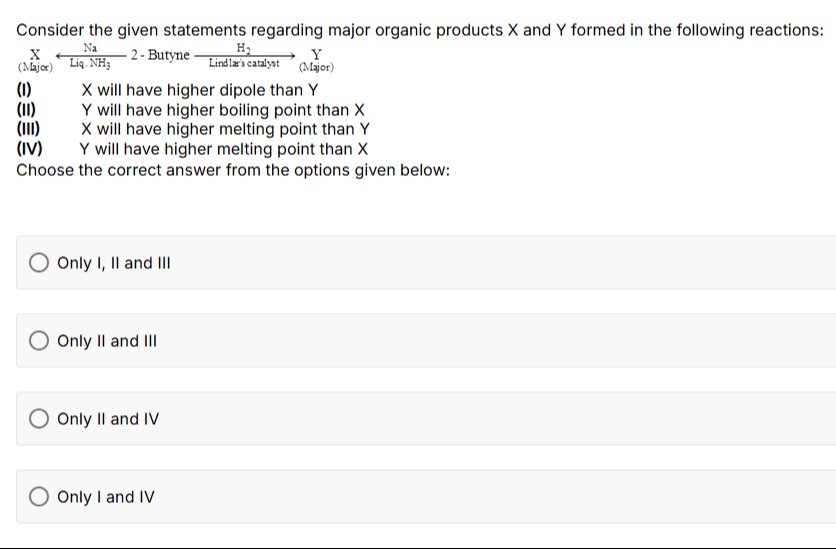Question
Question: Consider the given statements regarding major organic products X and Y formed in the following react...
Consider the given statements regarding major organic products X and Y formed in the following reactions: (Major)XNa,Liq.NH3 2- Butyne H2,Lindlar′scatalyst(Major)Y

(I) and (II)
(I) and (III)
(II) and (III)
(III) and (IV)
(II) and (III)
Solution
-
Identifying the products:
-
Na in liquid NH₃ reduction: This reaction converts 2‐butyne to trans‑2‑butene (X) via anti addition, resulting in a symmetric molecule with negligible net dipole moment.
-
H₂ with Lindlar's catalyst: This method converts 2‑butyne to cis‑2‑butene (Y), which has a dipole moment due to the two methyl groups being on the same side.
-
-
Analyzing the statements:
-
(I) X will have higher dipole than Y: False, because trans‑2‑butene (X) is symmetric (no dipole) whereas cis‑2‑butene (Y) has a measurable dipole moment.
-
(II) Y will have higher boiling point than X: True, since the dipole in cis‑2‑butene (Y) leads to stronger intermolecular forces (dipole-dipole interactions) resulting in a higher boiling point.
-
(III) X will have higher melting point than Y: True, as the symmetric trans‑2‑butene (X) can pack more efficiently in the solid state, hence a higher melting point.
-
(IV) Y will have higher melting point than X: False, the opposite is true.
-
Final Answer: The correct statements are (II) and (III).
Summary:
- Explanation:
- Na/liq NH₃ gives trans‑2‑butene (X): symmetric, low dipole, high melting point.
- Lindlar’s catalyst gives cis‑2‑butene (Y): polar, higher boiling point, lower melting point.
